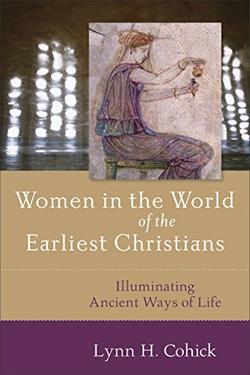Women in the World of the Earliest Christians
Daly’s famous work, Beyond God the Father (1973), questioned basic Christian credal convictions. Over the next several decades, her work launched discussions in support of and against her conclusions. The arguments generated about the role of women in the ancient world and in the modern church have become perhaps even more heated. I find at least two basic sorts of works on women in the New Testament. One type of work is highly critical of the historical claims of the New Testament, and may dispute the very existence of a biblical figure such as Lydia. Other works swing to the opposite extreme by reading the biblical text and other contemporary texts through a naïve historical lens. This group does not wrestle with the challenges that the ancient sources present; they fail to interpret carefully the texts’ rhetoric and to distinguish between prescriptive and descriptive statements.
Women in the World of the Earliest Christians is an effort to use the best of each group’s research. What I discovered is that the women populating the pages of the New Testament looked much like their Jewish and Gentile neighbors, in no small part because the followers of Jesus were raised as either Jews or pagans. Thus to understand these early women believers, I needed to better understand their own context. And it seems that in many interesting ways, Christian women of the first century looked remarkably like their Jewish and Gentile counterparts. That made the differences so interesting. For example, although both Gentiles and Jews had models for women celibates (Vestal Virgins, Philo’s Therapeutae), the early Christians enhanced the role of the single woman.
Certain stereotypes were overturned, such as the assumption that women were reclusive and cloistered in their homes. Indeed, women were literally everywhere in the public places of the city. Poor women went about their daily tasks, female shopkeepers worked alongside their male counterparts in their stands, and statues of wealthy benefactors, goddesses, and the women of the imperial family decorated temples, marketplaces, and coins. At this time, class and wealth often trumped gender. Thus a wealthy woman might command much influence in her city because she donated money to the local trade guild or sponsored a city festival.
In this mix were women followers of Jesus, negotiating their faith amidst their cultural constraints and limitations. Their faithfulness continues to be a testimony to all who explore their lives and their world.




